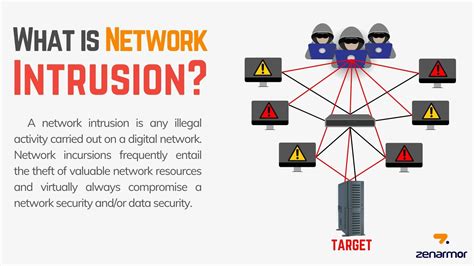5 Ways To Stop Network Intrusion

Network intrusions are a constant threat to businesses and individuals alike, compromising sensitive data and disrupting operations. The landscape of cybersecurity is ever-evolving, with new threats and vulnerabilities emerging daily. To protect against these intrusions, it’s crucial to understand the nature of the threats and implement robust defenses. Here are five ways to stop network intrusions, focusing on proactive measures and cutting-edge technologies.
1. Implement a Comprehensive Firewall System
A firewall is the first line of defense against network intrusions, acting as a barrier between your network and the internet. Modern firewalls, especially next-generation firewalls (NGFWs), offer advanced features such as deep packet inspection, intrusion prevention, and application awareness. These capabilities enable the firewall to not only block unauthorized access but also detect and prevent sophisticated threats like malware and ransomware. When selecting a firewall system, consider one that integrates well with your existing infrastructure and has the capacity to scale with your growing needs.
2. Utilize Intrusion Detection and Prevention Systems (IDPS)
Intrusion Detection Systems (IDS) monitor network traffic for signs of unauthorized access or malicious activity, while Intrusion Prevention Systems (IPS) can take automated actions to block or prevent such activity. Combining these into an Intrusion Detection and Prevention System (IDPS) provides both monitoring and proactive defense capabilities. IDPS solutions can be network-based, host-based, or wireless, offering flexibility in deploying them across different parts of your network. They are particularly effective against zero-day attacks, advanced persistent threats (APTs), and other sophisticated intrusion techniques that might evade traditional security measures.
3. Enhance Network Segmentation
Network segmentation involves dividing your network into smaller segments or sub-networks, each isolated from the others. This approach significantly enhances security by limiting the attack surface. Even if an intruder gains access to one segment, they will be confined to that segment and unable to move laterally across the network. Implementing VLANs (Virtual Local Area Networks) and configuring access controls based on the principle of least privilege can help in achieving effective network segmentation. Additionally, micro-segmentation, which involves dividing the data center into smaller, isolated zones, offers an even higher level of granularity and control.
4. Adopt Advanced Threat Protection (ATP) Solutions
Advanced Threat Protection solutions are designed to detect and prevent advanced threats such as zero-day exploits and ransomware. These solutions typically include sandboxing, where suspicious files are executed in an isolated environment to analyze their behavior, and endpoint detection and response (EDR) tools, which monitor endpoint devices for signs of malicious activity. ATP solutions often leverage machine learning and artificial intelligence to stay ahead of evolving threats. Integrating ATP with existing security infrastructure, such as SIEM (Security Information and Event Management) systems, can enhance its effectiveness by providing a centralized view of threats across the network.
5. Conduct Regular Security Audits and Penetration Testing
Regular security audits and penetration testing (or pen testing) are critical for identifying vulnerabilities in your network. Security audits involve a thorough examination of your network’s security posture, configurations, and practices to pinpoint weaknesses. Penetration testing, on the other hand, simulates real-world attacks on your network to test its defenses. Both are essential for maintaining the security and integrity of your network. Conducting these tests regularly keeps your security measures up-to-date and ensures compliance with evolving regulatory standards. It’s also advisable to engage external, third-party security experts periodically to bring fresh eyes and the latest threat intelligence to your security assessment.
FAQ Section
What are the primary benefits of implementing a next-generation firewall?
+The primary benefits include advanced threat protection, deeper packet inspection, and the ability to identify and control applications, making it a robust defense against modern network threats.
How often should security audits and penetration testing be conducted?
+These should be conducted at least annually, or whenever significant changes are made to the network infrastructure, to ensure ongoing protection against emerging threats and compliance with security standards.
What role does user education play in preventing network intrusions?
+User education is crucial as it helps prevent social engineering attacks, such as phishing, by informing users about best practices, the dangers of suspicious links and emails, and the importance of strong, unique passwords.
In conclusion, stopping network intrusions requires a multi-layered approach that combines technological defenses with proactive strategies and ongoing vigilance. By implementing these measures, businesses and individuals can significantly reduce their vulnerability to cyber threats, protecting their data and ensuring the integrity of their operations. Remember, cybersecurity is an ongoing process that demands constant updating and refining to stay ahead of evolving threats.



